Tarps for camping come in all shapes and sizes. However, not all tarps are made the same. And, not all tarps are suitable for certain types of camping.
Size, weight, and functionality are all governing attributes you need to be aware of before purchasing, packing and taking a tarp on your next outdoor adventure.
So, let’s dive into what makes a tarp suitable for camping. And, what are the best tarps for car and backcountry camping.
Article Contents
- What Size Tarp Do You Need for Camping?
- How Much Rope Do You Need for a Tarp?
- How are Tarps Different / Better Than Others?
- Best Tarps for Camping

What Size Tarp Do You Need for Camping?
Tarps, like any other piece of outdoor equipment, come in all shapes and sizes. For camping, you really need to think about what and where you’re intending to use a tarp.
Tarps provide additional protection from the elements. Rain, direct sunlight, even wind can wreck havoc on your campsite. A well placed and properly utilized tarp will help keep mother nature at bay.
Tarp Size for Tent Coverage
Hanging a tarp above a camping tent is a wise decision, especially if rain is in the forecast. It can also provide additional shade in summer months so your tent stays cooler for longer.
Depending on the size of your tent, a tarp should cover the entire footprint with a few additional feet on either side. Additionally, you’ll want to have a few extra feet coverage near tent doors to keep you sheltered when you enter and exit the tent.
Here’s a handy chart to determine how large a tarp should be to cover a tent, depending on its capacity.
Standard Tent and Tarp Sizes
| Tent Capacity | 1 to 2 Person | 3 to 4 Person | 6 to 8 Person |
| Tent Size [Floor Dimensions] | 7’ x 4’ | 8’ x 8’ | 12’ x 9’ |
| Recommended Tarp Size | 10’ x 8’ | 12’ x 10’ | 16’ x 12’ |
Tarp Size for Picnic Table
Picnic tables are quite often included in most campsites. For the most part, they are located in open areas, exposed to rain and direct sun light.
Personally, I like to set up my camp kitchen at one end of a picnic table. And, so keep myself cool and dry while I’m cooking, I like to set up a tarp over the picnic table.
A standard picnic table is approximately 8 feet long by 6 feet wide. So, you want to use a tarp that larger than those dimensions. I typically stick with a 12 x 16 polypropylene tarp to give me lots of extra coverage around the picnic table for camp chairs or keeping coolers in the shade.
Check your local hardware store for poly tarps. If you need to find one online, this polypropylene tarp on Amazon is a perfect size and is relatively cheap!
Tarp Size for Hammock Coverage
A lot of campers as well as outdoor enthusiasts are starting to use lightweight outdoor hammocks, for both relaxation and overnight sleeping.
Most hammocks don’t include a tarp to shelter from rain or direct sunlight. So, setting up an a-frame style tarp overhead can greatly enhance your hammock experience.
A standard single person hammock is around 9 feet long, whereas a double person hammock is slightly longer at 10 feet long.
- For car camping, a 12’ x 9’ polypropylene tarp is good to protect the hammock and anyone laying inside.
- For backcountry camping, a lightweight and waterproof nylon tarp is a better choice. This hammock tarp from Amazon is purpose built for hammocks, and it includes guy-lines and ground stakes!
Tarp as a Tent Footprint
Utilizing a tent footprint, also known as a ground sheet or ground cloth, helps to protect a tent’s base from water infiltration and wear, but can you use a tarp as a tent footprint? Yes!
A tarp can be used as a tent footprint if implemented correctly. When you use a tarp as tent footprint, it should not extend beyond the base of your tent.
Even a tarp that extends a few inches wider than your tent base can be detrimental. Follow these tips:
- Fold the tarp so that it lays completely underneath the tent
- Then, when it rains, water doesn’t pour down the sides of your tent and collect onto the footprint
- Instead, water is allowed to flow onto the ground and beneath the footprint
By using a tarp footprint you’re essential adding an extra layer of protection between your tent and the ground.
The tarp acts as an additional water barrier and sacrificial layer to take on the brunt of the abuse between the ground in the base of your tent, which can be replaced relatively inexpensively.
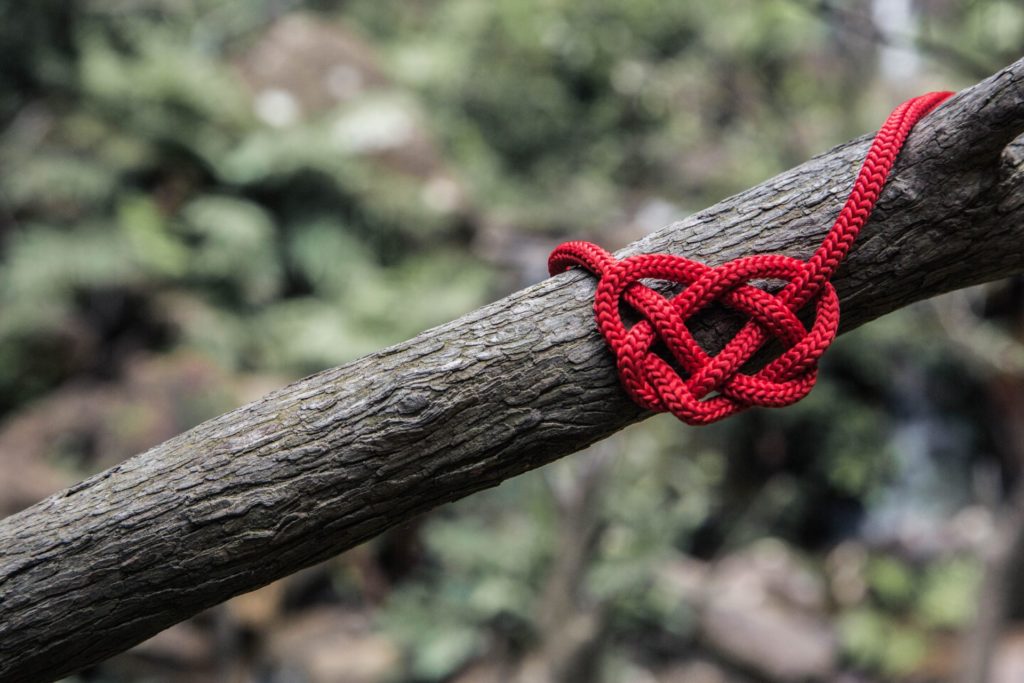
How Much Rope Do You Need for a Tarp?
A tarp used to over a tent or a picnic table needs quite a bit more rope than a tarp used over a hammock.
For my foolproof tarp set up method, you’ll need 2 sets of rope of various lengths and types.
A single, primary rope is used to hang the tarp. This rope is tied around trees at opposite ends to keep the tarp suspended. Because trees can be far apart, I recommend getting at least 100 feet (30 meters) of 3/16-inch nylon static rope.
Secondary ropes are used to tie-down the corners of the tarp to the ground. These ropes need to be thin, yet strong. You will need 4 ropes of equal length. I recommend 65 feet (20 meters) of 1.8 mm reflective paracord rope. This rope can be cut into 4 pieces, each 16.4 feet (5 meters) in length.
Grounds stakes are required to secure the secondary ropes to anchor points in the ground. To set up a tarp, 4 heavy duty stakes are needed.
Pro-tip: Tents typical come with extra stakes which, if not used for your tent, can be used to set up a tarp.
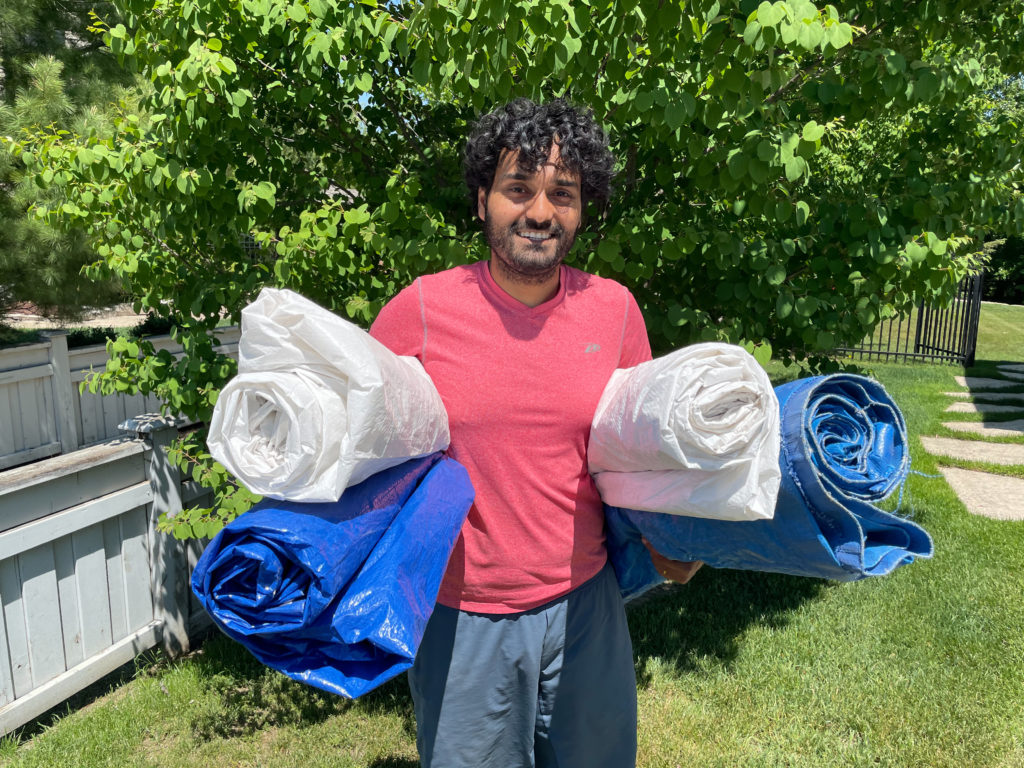
How are Tarps Different / Better Than Others?
Generally, tarp performance is massively influenced by 2 key criteria – fabric material and fabric coating.
To maximize the performance, tarp manufacturers select specific fabric materials and coatings to minimize weight and cost, and maximize strength, durability and waterproofness.
Tarp Fabric Material
Tarps are typically made from synthetic fibers, commonly nylon, polyester, and polyethylene, which are strong, moisture resistant, and lightweight.
- Nylon and its variants are typically high strength and lightweight.
- Polyester and its variants are generally more durable
- Polyethylene is inexpensive but heavy and not packable
- Canvas tarps are too bulky for camping use
Tarp Fabric Coating
To enhance the water repelling performance, manufacturers typically apply a waterproof coating to one side of tarps.
Waterproof coatings are required for nylon and polyester woven fabric tarps, but are not required for polyethylene tarps which are intrinsically waterproof.
Waterproof coatings are typically made from polyurethane or a combination of polyurethane and silicone.
According to manufacturers, polyurethane is widely used because it’s:
- Inexpensive
- Achieves high hydrostatic head (waterproof rating) of >10,000 mm
- Accepts fire retardants
- Doesn’t degrade the fiber material
Silicone is typically applied to the opposite side of polyurethane coated tarps. Silicone is advantageous because it’s:
- Waterproof longevity is better than other coatings
- Chemically more waterproof (hydrophobic)
Because of the coating process, these tarps are typically more expensive than uncoated tarps.
Pro-tip: For more detailed information on coatings and materials, check out this in-depth article about Waterproof Fabric Coatings.
Best Tarps for Camping
There are loads of tarps on the market which can make it difficult and confusing to find the right one to suit your needs.
Personally, I own a MEC Silicone Scout Tarp for backcountry camping and several large polyethylene tarps for car camping. They’ve easily stood up to torrential downpours and fierce winds.
To keep the decision-making process simple, I highly recommend these tarps for car camping and backcountry camping.
Car Camping – Budget-Friendly Option
Typically, when you are car camping weight isn’t an issue but cost is. So, I’d recommend using a polyethylene tarp. They are manufactured inexpensively and are durable enough for car camping.
First check your local hardware or outdoor store for polyethylene tarps. If you need to find one online, this polyethylene tarp on Amazon is a perfect size and is relatively cheap!
Backcountry Camping – Premium Option
For backpackers and backcountry campers, the $70 REI Co-op Trailbreak Tarp (12’ x 12’) is a great option. For its size and performance characteristics it’s the best value.
Alternatively, the next best value option is the Aqua Quest Defender Tarp (15’ x 15’). This tarp is fantastic for larger groups. Its large size can create a massive sheltered area to keep people, equipment, and supplies out of the rain or protected from the sun.
More Tarp Related Information…
- Can You Use a Tarp as a Tent Foot Print?
- How Much Does a Camping Tarp Cost and Weigh?
- Is It Safe to Start a Fire Under a Tarp?
- How to Properly Set Up a Tarp for Rain or Shade
This article contains affiliate links, which help support this blog at no cost to you!
Related Posts
- Backpack Search | 30L Backpack Buyer’s GuideThere are thousands of backpacks on the market today. And, with so many models and… Read more: Backpack Search | 30L Backpack Buyer’s Guide
- How to Buy a Camping TentThe sheer number of tents on the market these days is out of control. There… Read more: How to Buy a Camping Tent
- What is Sleeping Pad R-Value? Insulation ExplainedOne of the best ways to sleep comfortably while camping during cooler conditions is by… Read more: What is Sleeping Pad R-Value? Insulation Explained
- Pros and Cons of Buying a Used Tent – Is It Actually Worth It?Whether it’s from a financial standpoint or an environmental one, buying a used tent might… Read more: Pros and Cons of Buying a Used Tent – Is It Actually Worth It?


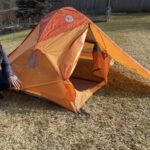
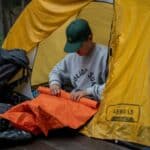
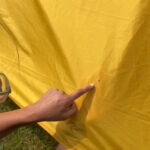
Good info on tarps. Also, I like the name of your site!
Thanks Johnny! Glad you found the information useful.